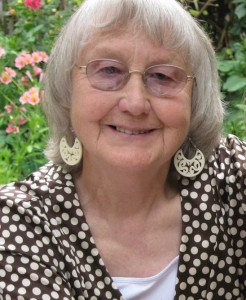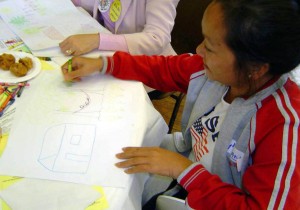-
Are you wondering where your housing policy and projects are headed?
-
Do they really meet the needs of residents?
-
Are people genuinely satisfied with what you are providing?
As people begin to express place-protective behavours in their neighbourhoods in response to what they see as unwanted intrusions, governments and developers are under increased pressure to “get it right”.
And often, we lack the information to make the appropriate changes that lead to successful outcomes.
I can help you in in many ways in planning and designing housing in your communities.
One approach is to work with you to listen attentively to the voices of local people and to connect with their unique local knowledge and information and their values and attitudes toward the housing in their communities.
Here are some topics worth considering:
The deeper meanings of housing
- People’s attachment to home: the house as a mirror of the self
- Why personal territories are important
- Grief and loss caused by eviction or forced relocation from housing (“root shock”)
Dealing with density
- NIMBY psychology and community engagement
- NIMBY psychology and housing design
- Why we have to do something about our attachment to the quarter-acre block?
- How we can overcome our dislike of higher density housing?
- Ecological reasons for increasing housing densities
- Social reasons for increasing housing densities
- Factors that can make housing at higher densities successful.
Designing dwellings for the future
- The healthy and sustainable house: the impact of house design on emotional and physical wellbeing
- The not-so-empty nest: why did junior not leave home?
- Working from home: what’s necessary for it to be successful
- Housing and neighbourhoods designed for children
- Housing designs for households from diverse cultures
Housing for older people
- Understanding the baby boomer issue in housing terms: what do the demographics tell us?
- Why are so many children in retirement housing during the day and what should we do about it?
- How can we overcome the problems with much of our current retirement housing?
- The basics of planning and design for housing for older people
I can provide inspirational advice to help you, your colleagues and communities address these sorts of issues as you seek to create inspirational housing opportunities to match the needs of different groups.
The House as a Mirror of Self
I am a colleague and student of renowned British housing theorist, Emerita Professor Clare Cooper Marcus. Together we wrote the acclaimed book, Housing as if People Mattered (1986). Professor Marcus followed with her award-winning book, The House as Mirror of Self: Exploring the Deeper Meanings of Housing (1994).
Drawing on my own experience, research and the principles in Cooper Marcus’ work, I can guide us to a deeper understanding of what housing can mean to people and how we can design to meet some of those deeper needs.
Housing Stories from Clare’s Book
Elsie
When she was forcibly removed from her public housing estate, Elsie experienced all the stages of grief normally associated with the death of a close friend or family member. Initially she was in shock, then denial and later, much, much later, she accepted her situation and made a good home for herself in another housing estate. Some of her original neighbours became depressed and ill; one committed suicide because he could not face losing his garden or having to put down his pets.
Peter
When Peter retired at sixty, he found himself an unwelcome guest in his wife’s domain and was relegated to life in the shed. She’d had the place to herself for forty years and felt that he had invaded her territory. He was always underfoot. Peter felt that he’d worked hard to make a nice home for her and felt excluded and unwanted. The house became a territorial battleground. Not surprisingly, Peter became seriously ill and died before his 61st birthday.
John
Leaving the priesthood at 45, John moved into the first house he had lived in by himself. He was amused that he spent much of his first meagre paycheques in decorations: pictures, new curtains, making the place “home”. But he found the silence and the privacy very difficult to manage. The display of his memorabilia on the mantelpiece comforted him during this transitional time.
Kim
For Kim, a small altar in an alcove in her small flat allowed her to venerate her ancestors and pray for solace in her new home during the lonely months she waited for news of her family so far away. She appreciated the fact that the kitchen was near the balcony so that she could continue her practice of barbecuing her evening meal, as she had done in her home country.
These are not isolated examples or remarkable stories.
What they have in common is a story of people’s deep attachment to housing and the importance of privacy, territory, display and what the environmental psychologists call “personalisation”.
Understanding these basic principles helps us design housing that better fits the needs of different groups.
Asking them directly is the most powerful way to check that we are on the right track.

Other Work by Clare Cooper Marcus
Click on the links below for more of Clare’s insights into housing planning and design, especially with regard to New Urbanism and shared open space in neighbourhoods:
- Clare Marcus Reply to Andres Duany re shared neighbourhood space
- Clare Marcus Shared Outdoor Space and Community Life
Clare has a new memoir in print: Iona Dreaming:The Healing Power of Place, A Memoir
To read more, please visit her website: https://www.ionadreaming.com/
To purchase her book from amzon.com, click here: https://www.amazon.com/Iona-Dreaming-Healing-Power-Place/dp/0892541571
